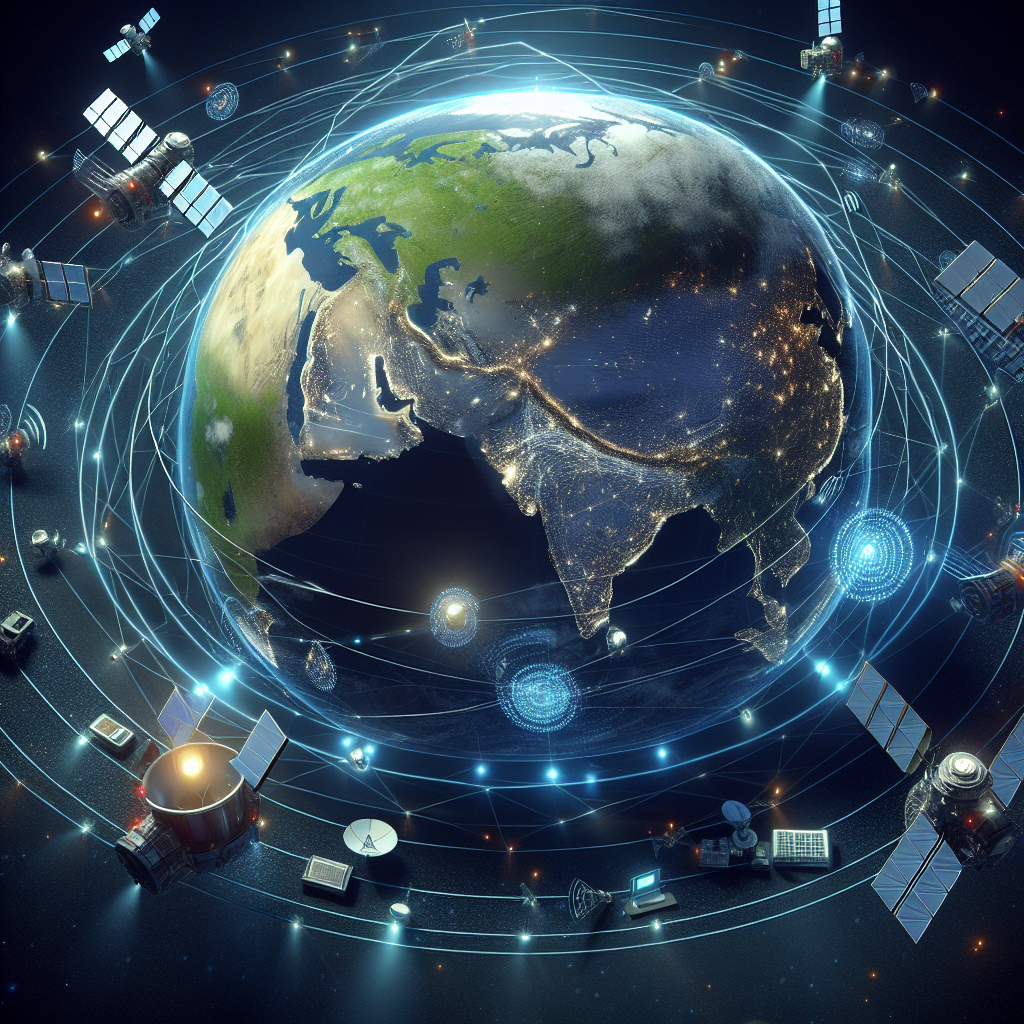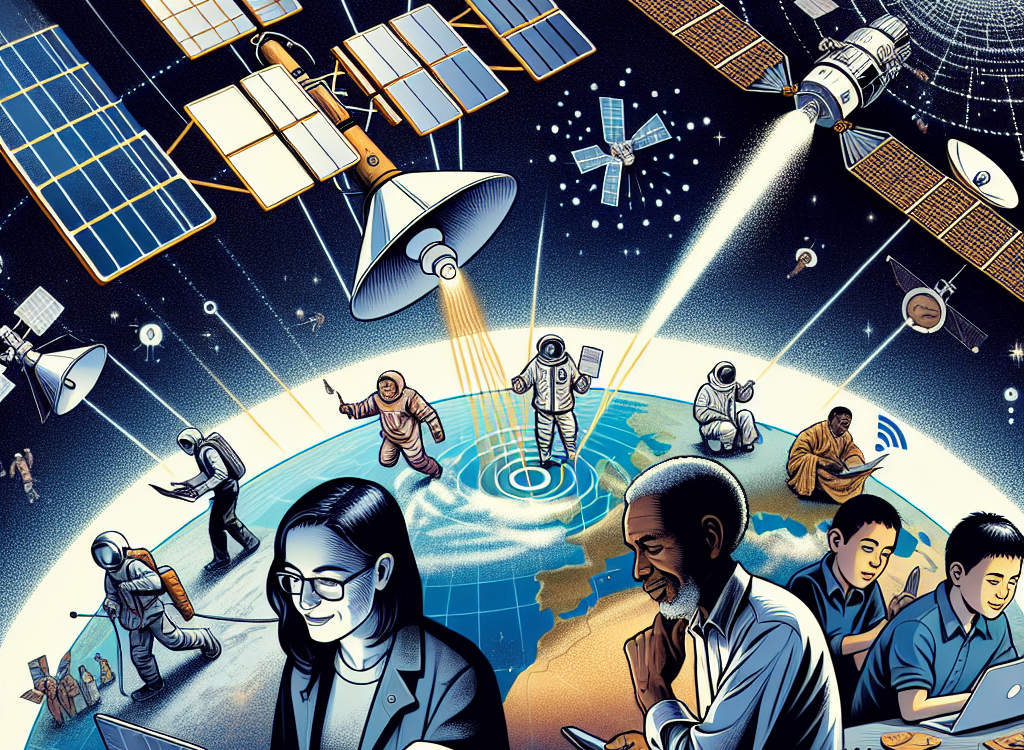What To Know
- It connects to the satellites via a phased-array antenna, which can dynamically adjust its beam to maintain a stable connection even as the satellites move across the sky.
- Starlink, on the other hand, uses a constellation of thousands of small satellites in low Earth orbit to provide internet coverage to even the most remote corners of….
Starlink, Elon Musk’s ambitious satellite internet service, has been making waves in the tech world. With promises of high-speed internet access for even the most remote areas of the globe, Starlink has captured the attention of many. But how exactly does it work? In this article, we will break down the intricacies of Starlink and shed light on its revolutionary technology.
At its core, Starlink aims to provide internet connectivity through a constellation of thousands of small satellites orbiting the Earth. These satellites work together to create a global network that can beam internet signals to users on the ground. Unlike traditional internet service providers that rely on ground-based infrastructure, Starlink’s satellites are the backbone of its network.
To achieve this, Starlink satellites are launched into low Earth orbit, much closer to the planet than traditional communication satellites. This proximity allows for lower latency and faster internet speeds. The satellites are placed in a constellation formation, meaning they are strategically positioned to ensure coverage across the entire globe.
Each Starlink satellite is equipped with advanced technology, including high-powered antennas and sophisticated onboard processors. These features enable the satellites to communicate with each other and with ground stations on Earth. The ground stations act as gateways, connecting the satellites to the internet backbone and facilitating the transfer of data.
One of the key advantages of Starlink is its ability to bypass the limitations of traditional internet infrastructure. In many rural or remote areas, laying down fiber optic cables or building cell towers is simply not feasible or cost-effective. Starlink’s satellite-based approach eliminates the need for physical infrastructure, making it a viable solution for areas that were previously underserved or completely unserved.
Another notable aspect of Starlink is its focus on reducing latency. Latency refers to the time it takes for data to travel from a user’s device to its destination and back. Traditional satellite internet services suffer from high latency due to the long distances that signals must travel between the Earth and the satellites. Starlink, however, aims to overcome this challenge by placing its satellites in low Earth orbit, significantly reducing the distance and thus the latency.
To access Starlink’s internet service, users need a small satellite dish, known as a “user terminal,” installed at their location. The user terminal is designed to automatically track and communicate with the Starlink satellites overhead. It connects to the satellites via a phased-array antenna, which can dynamically adjust its beam to maintain a stable connection even as the satellites move across the sky.
As of now, Starlink is still in its beta testing phase, with limited availability in select regions. However, the company has plans to rapidly expand its coverage and aims to provide global internet coverage in the near future. With its ambitious goals and innovative technology, Starlink has the potential to revolutionize internet access and bridge the digital divide.
In conclusion, Starlink is Elon Musk’s satellite internet service that aims to provide high-speed internet access to even the most remote areas of the world. By leveraging a constellation of thousands of small satellites in low Earth orbit, Starlink bypasses the limitations of traditional infrastructure and offers low latency connectivity. With its user terminals and advanced technology, Starlink has the potential to bring internet access to underserved regions and bridge the digital divide on a global scale.
The Benefits of Starlink: Revolutionizing Internet Connectivity Worldwide

The Benefits of Starlink: Revolutionizing Internet Connectivity Worldwide
In today’s digital age, reliable and fast internet connectivity has become a necessity for individuals and businesses alike. However, many parts of the world still lack access to a stable internet connection, especially in rural and remote areas. Elon Musk’s Starlink aims to change that by revolutionizing internet connectivity worldwide.
One of the key benefits of Starlink is its ability to provide high-speed internet access to areas that are currently underserved or completely unserved by traditional internet service providers. Traditional internet infrastructure, such as fiber-optic cables, is expensive and time-consuming to deploy, making it economically unviable in many remote locations. Starlink, on the other hand, uses a constellation of thousands of small satellites in low Earth orbit to provide internet coverage to even the most remote corners of the globe.
By leveraging satellite technology, Starlink can bypass the need for physical infrastructure and deliver internet connectivity directly from space. This means that people living in rural areas, where laying cables is impractical, can now enjoy the same level of internet access as those in urban areas. This has significant implications for education, healthcare, and economic development in these underserved regions.
Another benefit of Starlink is its potential to bridge the digital divide between developed and developing countries. In many parts of the world, access to the internet is limited or prohibitively expensive, hindering social and economic progress. Starlink’s satellite-based internet service has the potential to level the playing field by providing affordable and reliable connectivity to these regions.
Moreover, Starlink’s low Earth orbit satellite constellation offers several advantages over traditional geostationary satellites. Geostationary satellites orbit at an altitude of around 36,000 kilometers, resulting in high latency or delay in data transmission. This can be problematic for applications that require real-time communication, such as video conferencing or online gaming. Starlink’s satellites, on the other hand, orbit at much lower altitudes, reducing latency and providing a more responsive internet experience.
Furthermore, Starlink’s satellite network is designed to be highly scalable. The current plan is to deploy thousands of satellites, with the ultimate goal of having tens of thousands in orbit. This massive satellite constellation will ensure that there is sufficient capacity to handle the ever-increasing demand for internet connectivity. As more and more people come online, Starlink’s network can easily scale up to meet the growing needs of users worldwide.
In addition to its benefits for individuals, Starlink also holds great promise for businesses. Reliable and fast internet connectivity is crucial for businesses to thrive in today’s global marketplace. With Starlink, businesses in remote areas can now access cloud services, collaborate with partners around the world, and compete on a level playing field with their urban counterparts.
In conclusion, Starlink has the potential to revolutionize internet connectivity worldwide. By leveraging satellite technology, it can provide high-speed internet access to underserved areas, bridge the digital divide, reduce latency, and scale up to meet the growing demand for connectivity. With Starlink, the dream of a truly connected world is becoming a reality, bringing countless opportunities for individuals, businesses, and communities around the globe.
Challenges and Future Prospects of Starlink: Analyzing the Potential Impact of Elon Musk’s Satellite Internet
Challenges and Future Prospects of Starlink: Analyzing the Potential Impact of Elon Musk’s Satellite Internet
As Elon Musk’s ambitious project, Starlink, continues to gain momentum, it is important to consider the challenges and future prospects of this satellite internet service. While Starlink has the potential to revolutionize internet connectivity worldwide, it also faces several obstacles that need to be addressed for its long-term success.
One of the primary challenges for Starlink is the sheer scale of the project. Musk aims to launch thousands of satellites into low Earth orbit to create a global network that can provide high-speed internet access to even the most remote areas. However, deploying and maintaining such a vast constellation of satellites is no small feat. It requires significant financial investment, advanced technology, and efficient operational management.
Another challenge is the regulatory environment. Starlink operates in a highly regulated industry, and obtaining the necessary licenses and permissions from various countries can be a complex and time-consuming process. Additionally, concerns have been raised about the potential impact of thousands of satellites on space debris and the risk of collisions with other satellites or space stations. Addressing these regulatory and safety concerns is crucial for the long-term viability of Starlink.
Despite these challenges, Starlink holds immense promise for the future. One of its key advantages is its ability to provide internet access to underserved areas. In many parts of the world, especially rural and remote regions, traditional internet infrastructure is either non-existent or inadequate. Starlink’s satellite-based network can bridge this digital divide and bring reliable internet connectivity to millions of people who currently lack access.
Moreover, Starlink’s low Earth orbit satellites offer several technical advantages over traditional geostationary satellites. The lower orbit reduces latency, resulting in faster internet speeds and improved user experience. This makes Starlink an attractive option not only for remote areas but also for urban areas where high-speed internet is in high demand.
The potential impact of Starlink extends beyond individual users. Industries such as agriculture, transportation, and emergency services can benefit from reliable and high-speed internet connectivity. For example, farmers can access real-time data and use precision agriculture techniques to optimize crop yields. Similarly, connected vehicles can rely on Starlink for navigation, communication, and safety features. In emergency situations, where traditional communication infrastructure may be compromised, Starlink can provide a lifeline for first responders and affected communities.
Looking ahead, the future prospects of Starlink seem promising. As the network expands and more satellites are deployed, the coverage and capacity of the service will improve. This will enable Starlink to reach a larger user base and offer even faster internet speeds. Additionally, advancements in satellite technology and operational efficiency will likely drive down costs, making the service more affordable and accessible to a wider range of users.
In conclusion, while Starlink faces significant challenges, its potential impact on global internet connectivity cannot be ignored. By addressing regulatory concerns, ensuring operational efficiency, and expanding its network, Starlink has the potential to revolutionize internet access worldwide. From bridging the digital divide to empowering industries and improving emergency response, the future prospects of Starlink are indeed exciting. As Elon Musk continues to push the boundaries of innovation, the world eagerly awaits the realization of his vision for a connected future.
